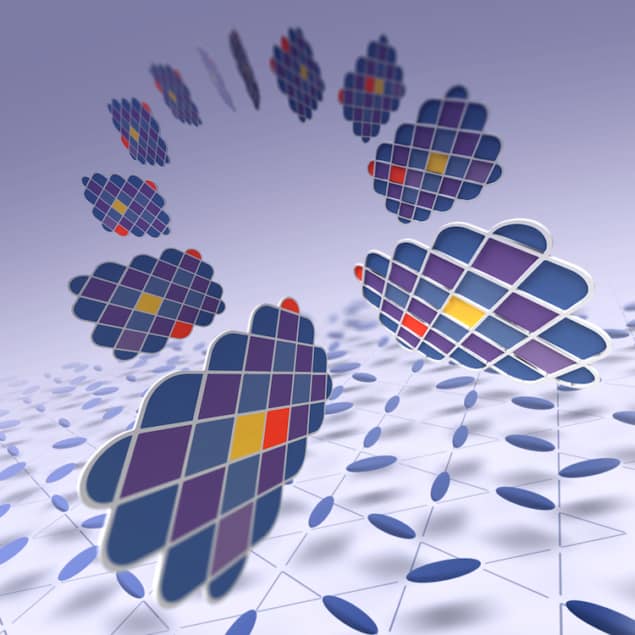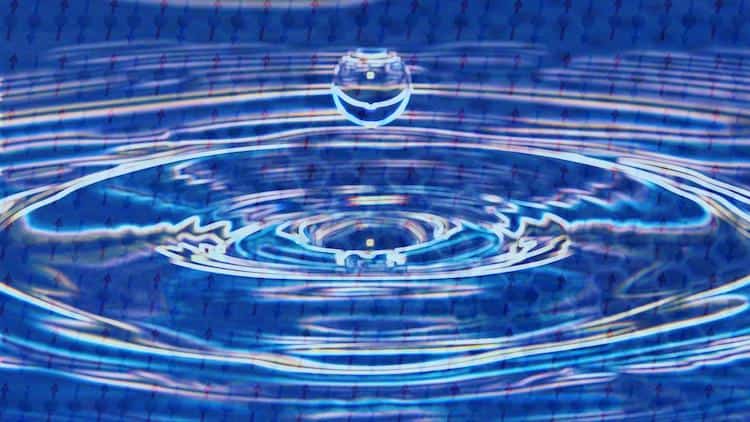
Physicists have measured long-range quantum entanglement in special, topologically ordered phases of matter for the first time. This feat, which was achieved independently by two research groups using coupled superconducting circuits and arrays of atoms, could aid the development of robust memories for quantum computers.
When certain materials are cooled to extremely low temperatures, exotic phases of matter appear. These phases are very different from familiar states such as solids, liquids or gases, and the particles in them interact in ways that are dominated by quantum entanglement. This purely quantum-mechanical effect allows two or more particles to be more closely related than classical physics permits, and it has numerous applications within quantum computing. In many cases, however, realizing these applications means entangling these particles over long distances within a material – a situation that, while predicted in theory, had never been measured in an experiment until now.
Topologically ordered states
In the latest work, researchers led by Frank Pollmann of the Technical University of Munich, Germany and Pedram Roushan of Google, together with a separate group led by Mikhail Lukin at Harvard University in the US, focused on phases that are topologically ordered, meaning that they retain certain essential properties even when locally deformed.
On the molecular scale, electrons in these special, topologically ordered states can only travel in one direction, meaning that they steer around imperfections or defects on the material’s surface without backscattering as they would in conventional materials. Another benefit is that in topological materials, a surface electron with a certain momentum cannot scatter into a state with opposite momentum because to do so it would have to flip its spin. Such states are thus said to be “topologically protected”, and they are considered desirable for reducing the error rate in quantum computing applications because they mitigate the effects of material defects that would otherwise destroy the quantum information (the spin state) carried by the electrons.
The problem is that conventional techniques cannot be used to probe the long-range entanglement properties of topologically ordered phases – a prerequisite for using them in quantum error correction. Doing this requires fine control of the individual quantum constituents in a system as well as the entanglement interactions between them. Fortunately, such precise control has become possible in recent years thanks to new quantum computing devices.
Quantum simulators
Roushan and colleagues used one such device, Google’s Sycamore quantum processor, to probe the lowest-energy state of the so-called “toric” code – an example of a topologically ordered quantum phase that shows promise for quantum error correction. By executing short quantum programmes on Sycamore, which comprises a two-dimensional array of 31 coupled superconducting quantum devices, the researchers were able to measure long-range entanglement between phases. What is more, they showed that they could encode quantum information into the toric code, thus protecting it from quantum errors.
Lukin and colleagues, for their part, took a different approach to reach the same conclusion. Drawing on a theoretical proposal from a group led by Ashvin Vishwanath, their work involved a collection of 219 atoms that they arranged in a two-dimensional lattice using optical tweezers (devices that use a highly focused laser beam to generate forces that hold and move micron-sized objects in the beam’s trajectory). By controlling the interactions between adjacent atoms in this quantum simulator, the team encouraged the lattice to adopt a topologically ordered phase.

Electron’s dual nature appears in a quantum spin liquid
The Harvard researchers then tracked the long-range entanglements that developed between the atoms. In particular, they measured how the quantum correlations set themselves up on the spins of the atoms along a long meandering path that reflected the topological order of the quantum phases. The resulting structure is known as a quantum spin liquid, which despite its name is actually a solid magnetic material that cannot arrange its magnetic moments (or spins) into a regular and stable pattern. This behaviour contrasts with that of ordinary ferromagnets, in which all the spins point in the same direction, and antiferromagnets, in which the spins point in alternating directions.
The Harvard researchers, whose work is described in Science alongside that of the Google-Munich team, say they now plan to use their programmable quantum simulator to continue studying quantum spin liquids and how they can be exploited to create a more robust quantum memory. Members of the Google team, for their part, have written a preprint in which they propose an approach that might allow them to realize even more exotic states. “In particular, we show that even so called ‘non-abelian’ states can be prepared,” Pollmann tells Physics World. “The hope is that future hardware will allow for deeper circuits to implement the proposed protocols.”
